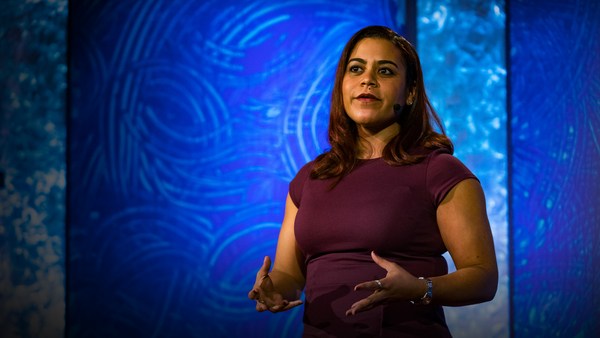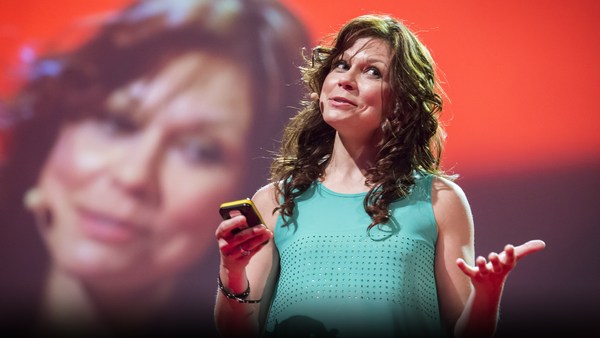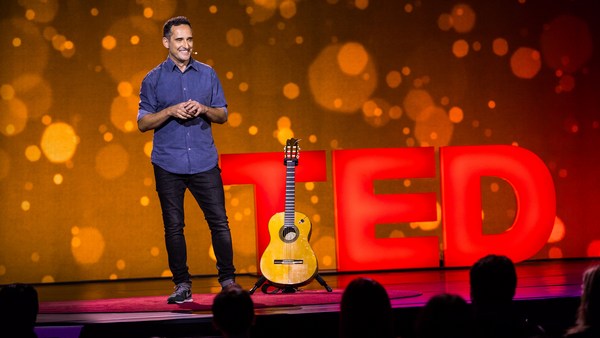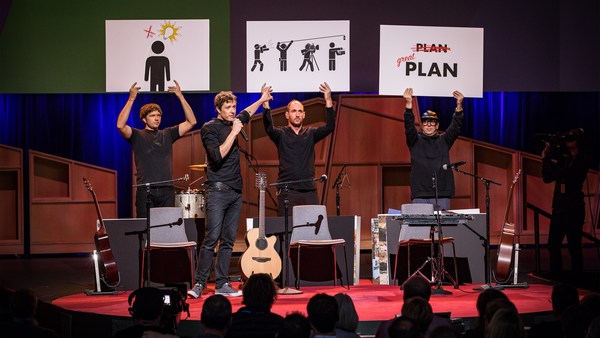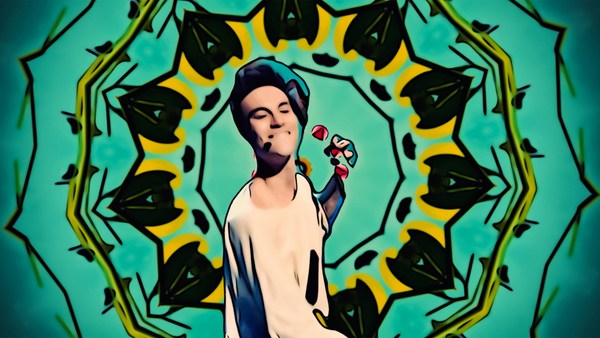How y'all doing? Good. I came here to give you a science lesson about animal mating systems and why defining monogamy has been a challenge for scientists. But you won't need a textbook or to download an online lecture. All you'll simply need to do is revisit the song "OPP" by Naughty by Nature.
(Laughter)
It was released in 1991. Now, "OPP" is a call-and-response song. So throughout the talk, I'm going to put lyrics up on the screen, and I'm going to recite some and I'm going to prompt you when it's your turn to do the response, OK?
(Cheers)
Now, I know some people in this audience know this song, so I need you to lead the way with the tempo and the rhythm, if that's alright, OK? Right, y'all ready?
You down with OPP?
Audience: Yeah, you know me!
DNL: You down with OPP?
Audience: Yeah, you know me!
DNL: You down with OPP?
Audience: Yeah, you know me!
DNL: That was perfect. Thank you.
"OPP, how can I explain it?
I'll take it frame by frame it.
To have y'all jumping shout and singing it
O is for other, P is for people. scratch your temple.
The last P, well, that's not that simple."
Now, in the song, the MC hints that it's a five-letter word, but to keep it rated PG, he simply refers to it as "property."
(Laughter)
The song is about cheating on your significant other. Now, around the time that this song was in heavy rotation, biologists were in deep discussion about whether bird species, notably songbirds and waterfowl were actually monogamous or not. See, for decades, generations of science students were taught that well over 90 percent of the bird species were monogamous. A male and female mating faithfully for life.
That was until the late 1980s, when a new laboratory technique came on the scene, which could copy DNA from a small tissue or fluid sample and decode the genetics of individuals. Now, before that technique, we were never ever certain about, 100 percent, who the parents of baby birds were. All we had were our field notes. And we would know which adults lived in a nest and which ones fed the baby birds. Well, come to find out, study after study kept coming in and we found so much evidence of infidelity --
(Laughter)
among bird species, particularly these songbirds that we thought were the pinnacle of monogamy. It would have made Maury Povich jealous for the ratings.
(Laughter)
It rocked biology and ornithology so hard, we had to modify and expand the entire definition of monogamy. Now, it was so bad that this was the headline of the "New York Times" science section, August, 1990. "Mating for Life? It's not for the Birds or the Bees."
(Laughter)
We had to come up with new definitions. The situation where an individual would change partners, either between breeding seasons or just simply because they didn't like their partner anymore? We now call this "serial monogamy."
(Laughter)
I didn't know it was going to be this funny.
(Laughter)
The situation where we know the male and female pair together and all the babies belong to both partners? We call that "genetic monogamy." And we now recognize that it only holds true for about 14 percent of the songbird species, which we were very certain were truly monogamous.
And with this reclassification, we realized that in a lot of those field observations where we saw a male and female sharing a nest, comaintaining a territory, even provisioning offspring together, often included a few baby birds that did not belong to the male partner. We call this "social monogamy."
(Laughter)
And the mechanism responsible? Extra-pair copulation. "It's OPP, time for other people's what you get it there's no room for relationship, there's just room to ..."
Audience: "Hit it!"
"How many brothers out there know just what I'm getting at?
Who thinks it's wrong because I was splitting and cohitting that.
Well if you do, that's OPP"
Actually, that's EPC Which is the abbreviation for extra-pair copulation.
(Laughter)
Now, we define extra-pair copulation as the mating outside of a pair bond. And just like we were discovering via science, it can lead to babies that don't belong to the male partner. Alright?
Now, I first learned about EPCs years later, after all the science news broke while I was in graduate school. And as we were taking a class, talking about current discoveries and mating systems, this topic comes up. And as my professor's going through the definition and recounting all the dramatic turns of events that lead to these new revelations, I'm sitting in class and a familiar song starts bopping in my head. I'm like, "You down with OPP? Yeah, you know me!"
(Laughter)
I mean, that's exactly what that song was about: EPCs. And what I recognized is that this gives us an opportunity to revisit this song. Let's switch the lyrics up. So say EPC.
Audience: EPC.
DNL: Say it, EPC!
Audience: EPC!
"I like to say it with pride
now, when you do it, do it well, and make sure that it counts. You're not down with a discount."
You down with EPC?
Audience: Yeah, you know me!
Now, I had always been playing songs in my head while I was in science class, kind of tapping into this index of pop culture and hip-hop songs. But when I would share my analogies with my science professors, all of whom were older white men, I often got blank and confused stares as responses.
(Laughter)
But when I would share this with people from communities like mine, or other colleagues -- so, diverse communities -- this hip-hop science remix was a hit. That's because I was either talking to people who looked and sounded like me, or at the very least, you know, listened to some of the same songs. We were sharing a common cultural lexicon. And with that lexicon, I was able to bring new science terms to them, and together, we were sharing a new comprehension of science for the culture.
Now, hip-hop song references are a really good tool for teaching content to students from hip-hop culture or urban communities. And I use it intentionally to connect to those students, tapping into vocabulary that they already know and systems that they already comprehend. And what it does in that process is it ratifies them, us, our culture as knowledge purveyors. I use hip-hop to frame and communicate science because I'm intentionally communicating science to broader audiences that public science outreach has traditionally overlooked. And in the process, I am affirming the genius that thrives in the young minds of people from every hood everywhere. So let me ask you one last time, you down with EPC?
Audience: Yeah, you know me!
DNL: You down with EPC?
Audience: Yeah, you know me!
DNL: You down with EPC?
Audience: Yeah, you know me!
DNL: Who's down with EPC?
Audience: All the homies!
Thank you.
(Applause and cheers)
